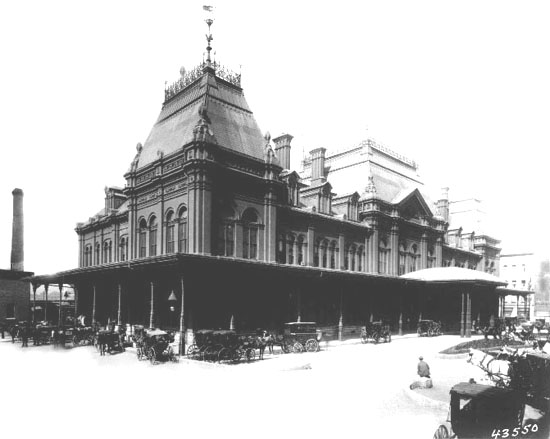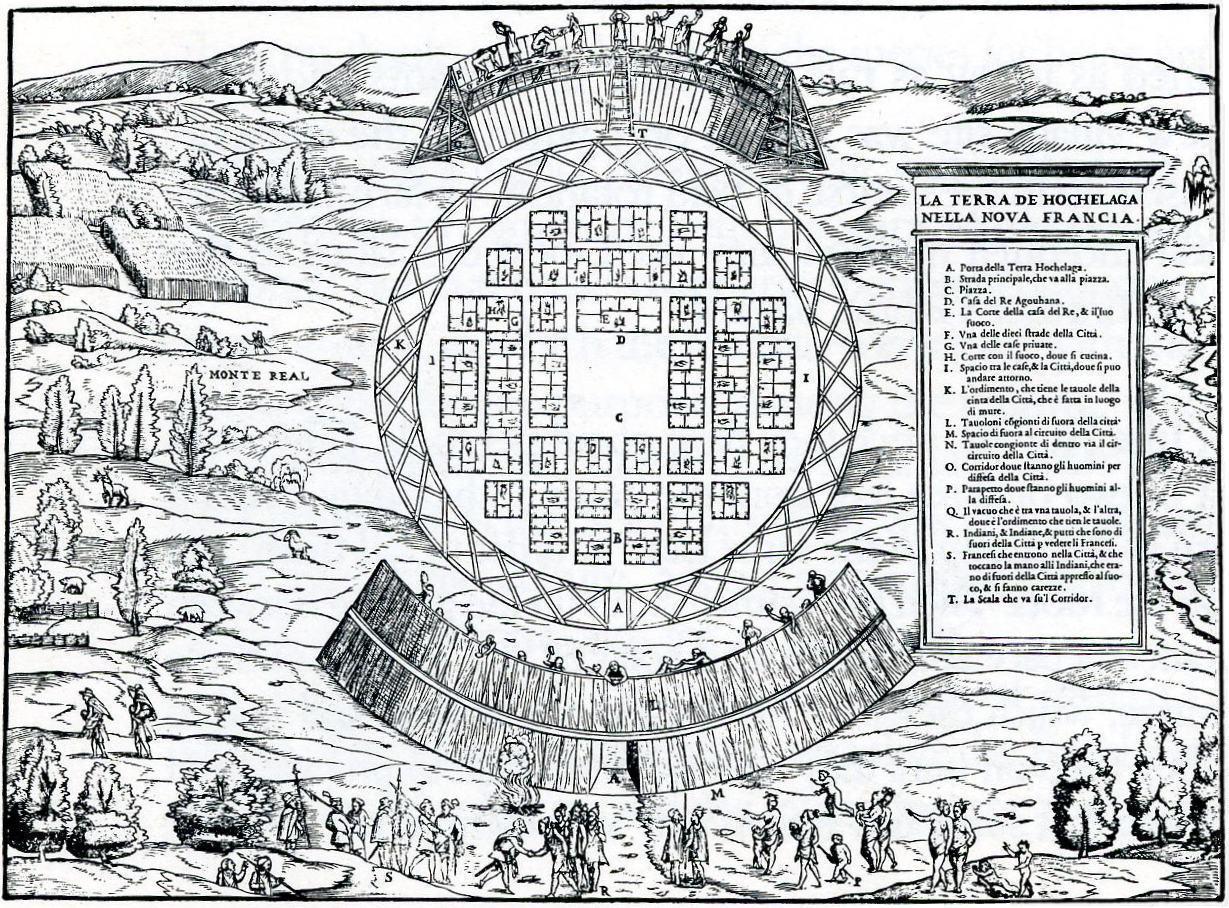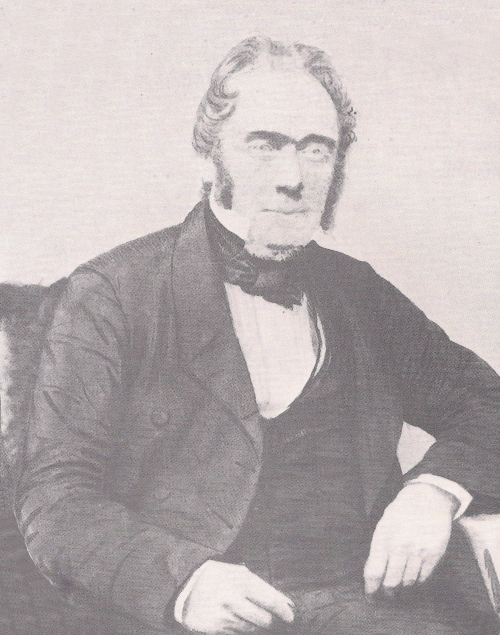|
Montreal And Lachine Railroad
The Montreal and Lachine Railroad opened on November 19, 1847, with service between Bonaventure Station in Montreal and the St. Lawrence River in Lachine. Built to bypass the Lachine Rapids, it was 12 km long. The railway merged with the Lake St. Louis and Province Railroad in 1850 under the name Montreal and New York Railroad. In 1857, it merged with the Champlain and St. Lawrence Railroad as the Montreal and Champlain Railroad. It would eventually be absorbed by the Grand Trunk Railway. Tokens The railway used token coins after it was found that train tickets were not convenient for use among the Indians and workmen on the Lachine Canal, who formed the bulk of company's third class travel. Imported from Birmingham Birmingham ( ) is a city and metropolitan borough in the metropolitan county of West Midlands in England. It is the second-largest city in the United Kingdom with a population of 1.145 million in the city proper, 2.92 million in the West ..., where t ... [...More Info...] [...Related Items...] OR: [Wikipedia] [Google] [Baidu] |
Bonaventure Station (1887–1952)
Bonaventure Station was the name of a railway station in Montreal, Quebec, Canada. Its name was later adopted by a commercial development and a metro station. Grand Trunk Railway Named for its location on Saint Bonaventure Street, now Saint Jacques Street, the first Bonaventure Station was built in 1847 as the main terminal for the Montreal and Lachine Railway. That company was leased by the Grand Trunk Railway in 1864 in order to obtain access to a more centrally located Montreal terminal. GTR subsequently purchased the company outright, becoming owner of the station. Several other railways also used Bonaventure Station over the years, though it was not referred to as a union station. Notably, the Intercolonial Railway obtained running rights over the Grand Trunk into Montreal at the end of the 1880s; Bonaventure Station thus became its western terminal for service to and from Halifax, Nova Scotia, and other points in the Maritimes (see ''Ocean Limited''). In 1888–1889, a ne ... [...More Info...] [...Related Items...] OR: [Wikipedia] [Google] [Baidu] |
Economy Class
Economy class, also called third class, coach class, steerage, or to distinguish it from the slightly more expensive premium economy class, standard economy class or budget economy class, is the lowest travel class of seating in air travel, rail travel, and sometimes ferry or maritime travel. Historically, this travel class has been called tourist class or third class on ocean liners. Marine Travel classes originated from a distinction between "cabin class" and "steerage" on sailing vessels in the 18th century. Cabin class, for wealthier passengers included small cabins and a shared dining room while "steerage" provided open decks with bunks often near the tackle to operate the Steer rudder in converted cargo space on the "between decks" area where passengers from poorer backgrounds cooked their own meals. With the arrival of steamships, competition between ocean liner companies led some companies like the Inman Line to offer additional options to economy passengers seeking to ... [...More Info...] [...Related Items...] OR: [Wikipedia] [Google] [Baidu] |
History Of Montreal
The history of the area around what is now known as Montreal, Montreal itself was established in 1642, located in what is now known as the province of Quebec, Canada, spans about 8,000 years. At the time of European contact, the area was inhabited by the St. Lawrence Iroquoians, a discrete and distinct group of Iroquoian-speaking indigenous people. They spoke Laurentian. Jacques Cartier became the first European to reach the area now known as Montreal in 1535 when he entered the village of '' Hochelaga'' on the Island of Montreal while in search of a passage to Asia during the Age of Exploration. Seventy years later, Samuel de Champlain unsuccessfully tried to create a fur trading post but the Mohawk of the Iroquois defended what they had been using as their hunting grounds. A fortress named Ville Marie was built in 1642 as part of a project to create a French colonial empire. Ville Marie became a centre for the fur trade and French expansion into New France until 1760, w ... [...More Info...] [...Related Items...] OR: [Wikipedia] [Google] [Baidu] |
Le Sud-Ouest
Le Sud-Ouest ( en, "the southwest") is a borough (''arrondissement'') of the city of Montreal, Quebec, Canada. Geography Le Sud-Ouest is an amalgam of several neighbourhoods with highly distinct histories and identities, mainly with working-class and industrial origins, grouped around the Lachine Canal. These include Saint-Henri, Little Burgundy, and Griffintown to the north of the canal, and Ville-Émard, Côte-Saint-Paul, and Pointe-Saint-Charles to the south. Located southwest of downtown Montreal (hence the name), the borough is bordered to the northwest by Côte-des-Neiges—Notre-Dame-de-Grâce, to the northeast by the Ville-Marie borough, to the south by the borough of Verdun, to the west by the borough of LaSalle and the town of Montreal West, and to the north by the city of Westmount. The Saint Lawrence River is located upon part of its eastern edge. History :''See History of Saint-Henri, History of Little Burgundy, History of Ville-Émard, History of Côte-S ... [...More Info...] [...Related Items...] OR: [Wikipedia] [Google] [Baidu] |
Railway Companies Established In 1847
Rail transport (also known as train transport) is a means of transport that transfers passengers and goods on wheeled vehicles running on rails, which are incorporated in tracks. In contrast to road transport, where the vehicles run on a prepared flat surface, rail vehicles (rolling stock) are directionally guided by the tracks on which they run. Tracks usually consist of steel rails, installed on sleepers (ties) set in ballast, on which the rolling stock, usually fitted with metal wheels, moves. Other variations are also possible, such as "slab track", in which the rails are fastened to a concrete foundation resting on a prepared subsurface. Rolling stock in a rail transport system generally encounters lower frictional resistance than rubber-tyred road vehicles, so passenger and freight cars (carriages and wagons) can be coupled into longer trains. The operation is carried out by a railway company, providing transport between train stations or freight customer facil ... [...More Info...] [...Related Items...] OR: [Wikipedia] [Google] [Baidu] |
Defunct Quebec Railways
{{Disambiguation ...
Defunct (no longer in use or active) may refer to: * ''Defunct'' (video game), 2014 * Zombie process or defunct process, in Unix-like operating systems See also * * :Former entities * End-of-life product * Obsolescence Obsolescence is the state of being which occurs when an object, service, or practice is no longer maintained or required even though it may still be in good working order. It usually happens when something that is more efficient or less risky r ... [...More Info...] [...Related Items...] OR: [Wikipedia] [Google] [Baidu] |
Conductor (transportation)
A conductor (North American English) or guard (Commonwealth English) is a train crew member responsible for operational and safety duties that do not involve actual operation of the train/locomotive. The ''conductor'' title is most common in North American railway operations, but the role is common worldwide under various job titles. In Commonwealth English, a conductor is also known as guard or train manager. The responsibilities of a conductor or guard typically include the following: * Ensuring that the train follows applicable safety rules and practices * Making sure that the train stays on schedule starting from the stations * Opening and closing power operated doors * Selling and checking tickets, and other customer service duties * Ensuring that any cars and cargo are picked up and dropped off properly * Completing en-route paperwork * Directing the train's movement while operating in reverse * Coupling or uncoupling cars * Assisting with the setting out or picking up of ... [...More Info...] [...Related Items...] OR: [Wikipedia] [Google] [Baidu] |
Birmingham Mint
The Birmingham Mint was a coining mint and metal-working company based in Birmingham, England. Formerly the world's largest privately-owned mint, the company produced coins for many foreign nations including France, Italy, China, and much of the British Empire during the 19th century. Beginning life in 1817 as a family-run brass fittings maker, the company later purchased equipment from the defunct Soho Mint to begin its own coin production. Over the subsequent decades the mint won contracts to mint national currencies, and built minting facilities worldwide so that at its height the Birmingham Mint's capacity surpassed that of even the Royal Mint. By the early 2000s disagreement with the Royal Mint over foreign contracts led to a slump in sales, cumulating in the mint's eventual closure in 2003 ending its almost 200-year history. According to Companies House, however, as of 2021 a revived mint continues to operate, albeit with little business activity. History 18th-19th c ... [...More Info...] [...Related Items...] OR: [Wikipedia] [Google] [Baidu] |
Birmingham
Birmingham ( ) is a city and metropolitan borough in the metropolitan county of West Midlands in England. It is the second-largest city in the United Kingdom with a population of 1.145 million in the city proper, 2.92 million in the West Midlands metropolitan county, and approximately 4.3 million in the wider metropolitan area. It is the largest UK metropolitan area outside of London. Birmingham is known as the second city of the United Kingdom. Located in the West Midlands region of England, approximately from London, Birmingham is considered to be the social, cultural, financial and commercial centre of the Midlands. Distinctively, Birmingham only has small rivers flowing through it, mainly the River Tame and its tributaries River Rea and River Cole – one of the closest main rivers is the Severn, approximately west of the city centre. Historically a market town in Warwickshire in the medieval period, Birmingham grew during the 18th century during the Midla ... [...More Info...] [...Related Items...] OR: [Wikipedia] [Google] [Baidu] |
Lachine Canal
The Lachine Canal ( in French (language), French) is a canal passing through the southwestern part of the Island of Montreal, Quebec, Canada, running 14.5 kilometres (9 miles) from the Old Port of Montreal to Lake Saint-Louis, through the boroughs of Lachine (borough), Lachine, LaSalle, Quebec, Lasalle and Le Sud-Ouest, Sud-Ouest. Before the canal construction there was a lake, Lac St. Pierre or or Petit Lac St. Pierre. The lake and its rivers can be seen on the maps of Montreal of the years 1700, 1744 and on the map titled "The isles of Montreal. As they have been surveyed by the French engineers" (1761). The lake is now filled in and located near the Turcot Interchange on Autoroute 20. The canal gets its name from the French word for China (). The European explorers sought to find a route from New France to the Western Sea, and from there to China and hence auspiciously the region where the canal was built was named Lachine. Due to the continuous disposal of industrial wa ... [...More Info...] [...Related Items...] OR: [Wikipedia] [Google] [Baidu] |
Montreal
Montreal ( ; officially Montréal, ) is the List of the largest municipalities in Canada by population, second-most populous city in Canada and List of towns in Quebec, most populous city in the Provinces and territories of Canada, Canadian province of Quebec. Founded in 1642 as ''Fort Ville-Marie, Ville-Marie'', or "City of Mary", it is named after Mount Royal, the triple-peaked hill around which the early city of Ville-Marie is built. The city is centred on the Island of Montreal, which obtained its name from the same origin as the city, and a few much smaller peripheral islands, the largest of which is Île Bizard. The city is east of the national capital Ottawa, and southwest of the provincial capital, Quebec City. As of 2021, the city had a population of 1,762,949, and a Census Metropolitan Area#Census metropolitan areas, metropolitan population of 4,291,732, making it the List of the largest municipalities in Canada by population, second-largest city, and List of cen ... [...More Info...] [...Related Items...] OR: [Wikipedia] [Google] [Baidu] |
Indigenous Peoples Of The Americas
The Indigenous peoples of the Americas are the inhabitants of the Americas before the arrival of the European settlers in the 15th century, and the ethnic groups who now identify themselves with those peoples. Many Indigenous peoples of the Americas were traditionally hunter-gatherers and many, especially in the Amazon basin, still are, but many groups practiced aquaculture and agriculture. While some societies depended heavily on agriculture, others practiced a mix of farming, hunting, and gathering. In some regions, the Indigenous peoples created monumental architecture, large-scale organized cities, city-states, chiefdoms, states, kingdoms, republics, confederacies, and empires. Some had varying degrees of knowledge of engineering, architecture, mathematics, astronomy, writing, physics, medicine, planting and irrigation, geology, mining, metallurgy, sculpture, and gold smithing. Many parts of the Americas are still populated by Indigenous peoples; some countries have ... [...More Info...] [...Related Items...] OR: [Wikipedia] [Google] [Baidu] |









_2007.jpg)